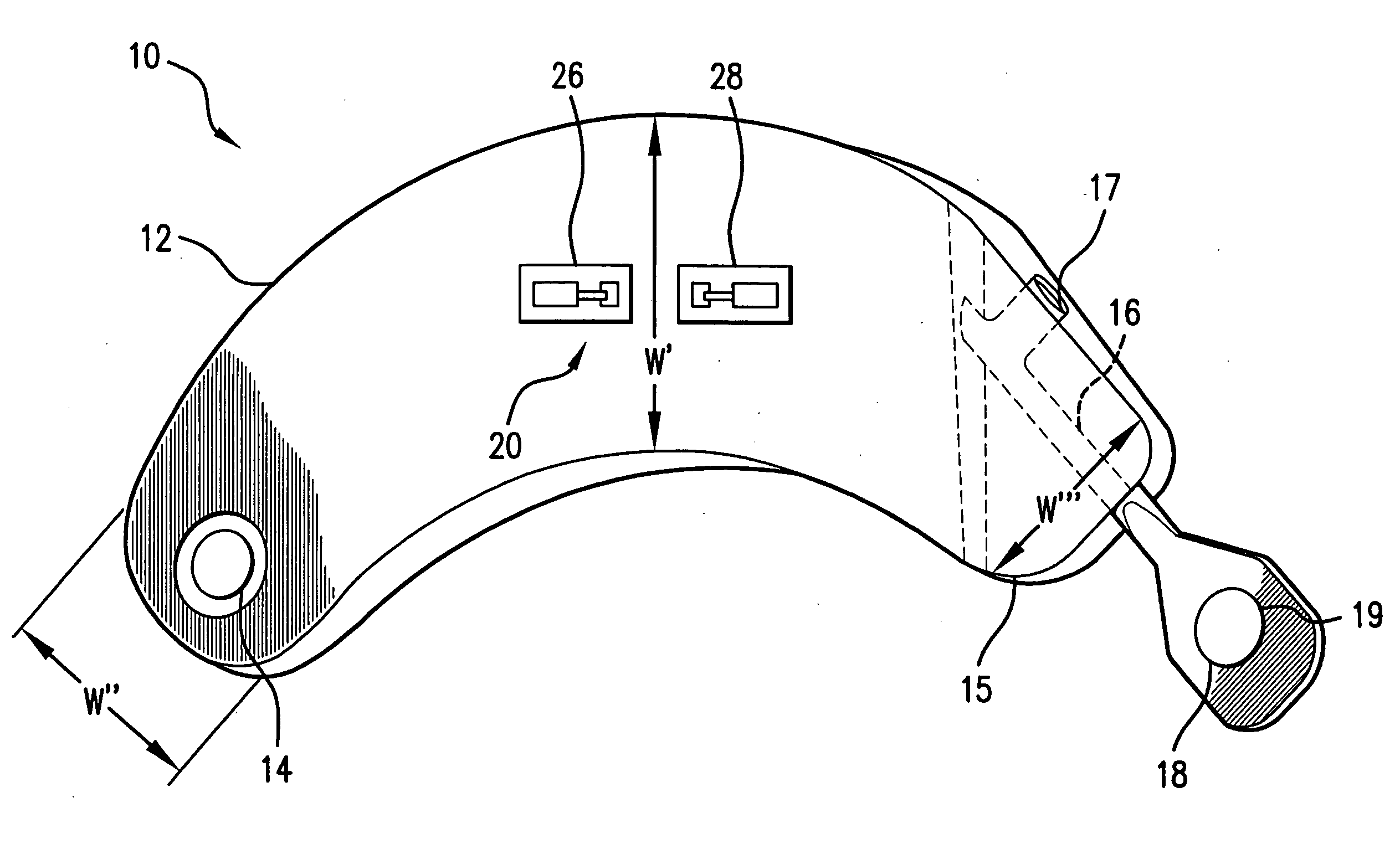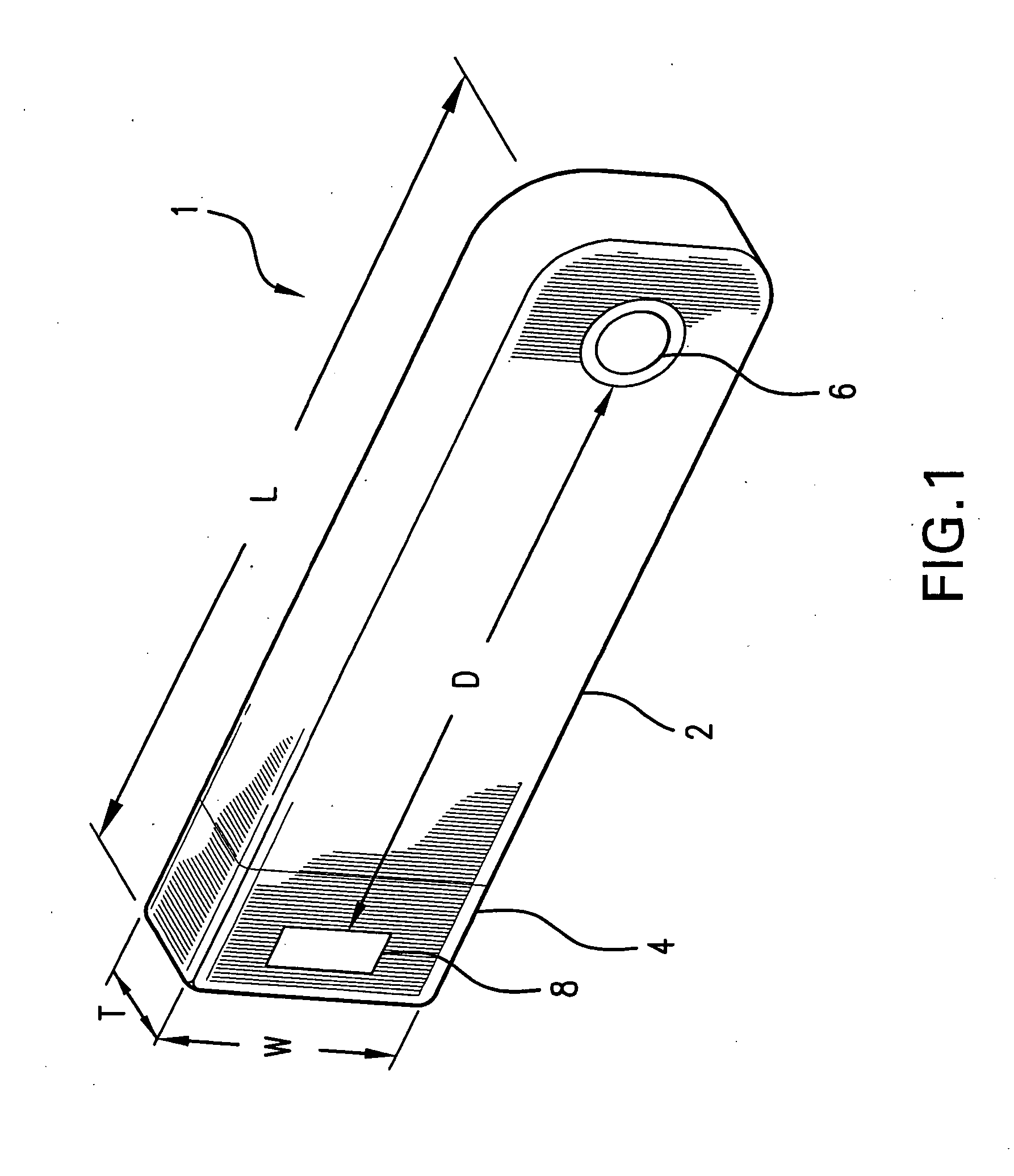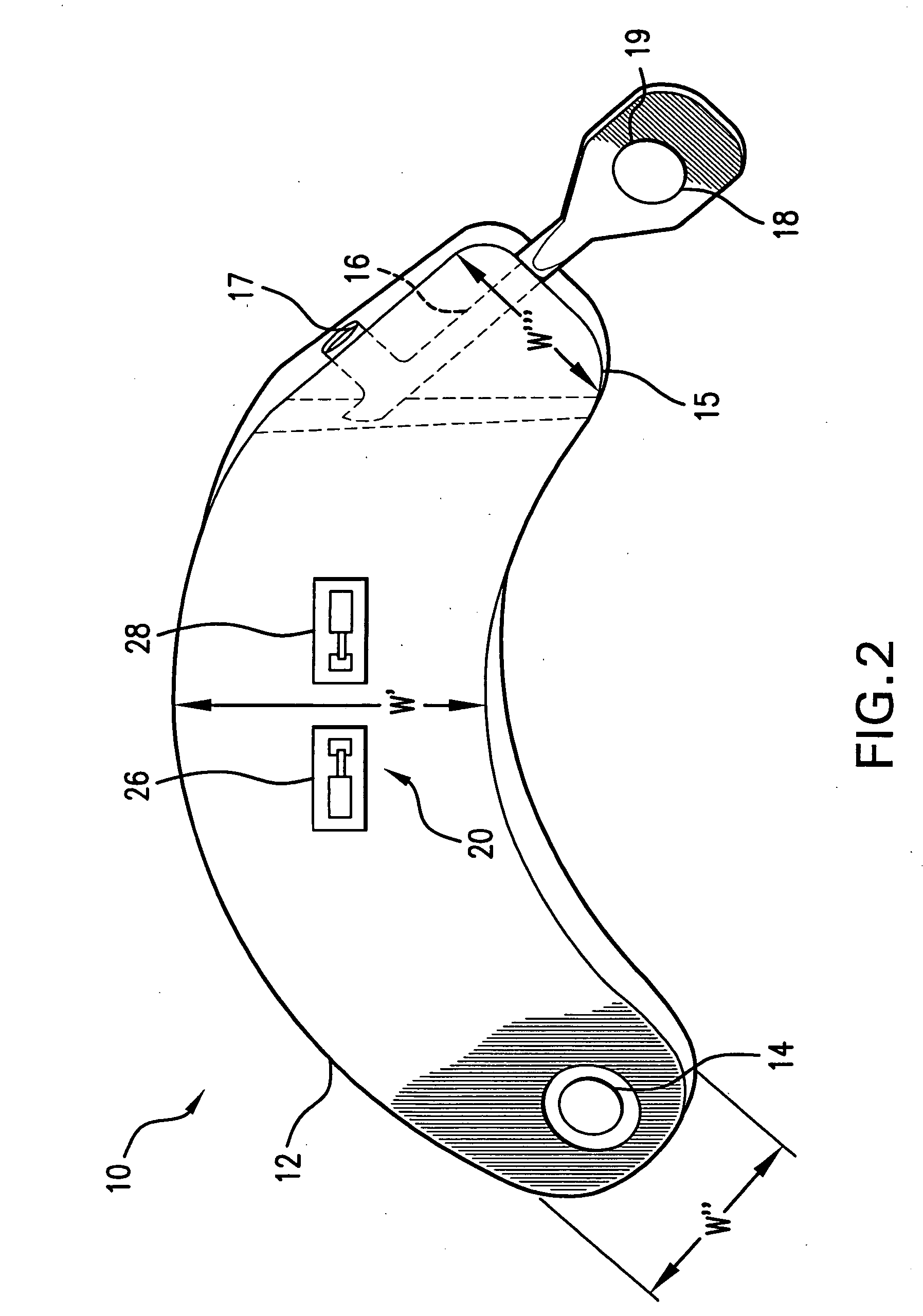Implantable device for vital signs monitoring
a technology of vital signs and implants, applied in the field of implantable devices for vital signs monitoring, can solve the problems of limiting the quality of received signals, limiting the time of data recording, and not being able to measure other vital signs such as temperature, blood oxygen, blood pressure, etc., to achieve enhanced signal quality, less suture requirements, and better electrode spacing
- Summary
- Abstract
- Description
- Claims
- Application Information
AI Technical Summary
Benefits of technology
Problems solved by technology
Method used
Image
Examples
Embodiment Construction
[0063]FIG. 1 illustrates the prior art implantable loop recorder 1 having a shell housing 2 with electrode 6 on the outside of the shell housing. The implantable loop recorder 1 also has a plastic header 4 with electrode 8 on its outer surface. The electrodes 6 and 8 are separated by a fixed distance “D”. The shape of the implantable loop recorder 1 is designed to be placed subcutaneously through a small slit in the skin. In spite of this, the shape of the implantable loop recorder 1 is of substantially uniform width “W” and thickness “T” although the width “W” is less than the length “L”. The prior art implantable loop recorder 1 which is sold as the Medtronic Reveal™ implantable loop recorder is designed to record electrical signals from the heart with a total recording time of up to 42 minutes. Recording is continuous with the data captured for later physician review by patient initiation using an external device or an event detected by the implantable loop recorder. The implanta...
PUM
 Login to View More
Login to View More Abstract
Description
Claims
Application Information
 Login to View More
Login to View More - R&D
- Intellectual Property
- Life Sciences
- Materials
- Tech Scout
- Unparalleled Data Quality
- Higher Quality Content
- 60% Fewer Hallucinations
Browse by: Latest US Patents, China's latest patents, Technical Efficacy Thesaurus, Application Domain, Technology Topic, Popular Technical Reports.
© 2025 PatSnap. All rights reserved.Legal|Privacy policy|Modern Slavery Act Transparency Statement|Sitemap|About US| Contact US: help@patsnap.com



